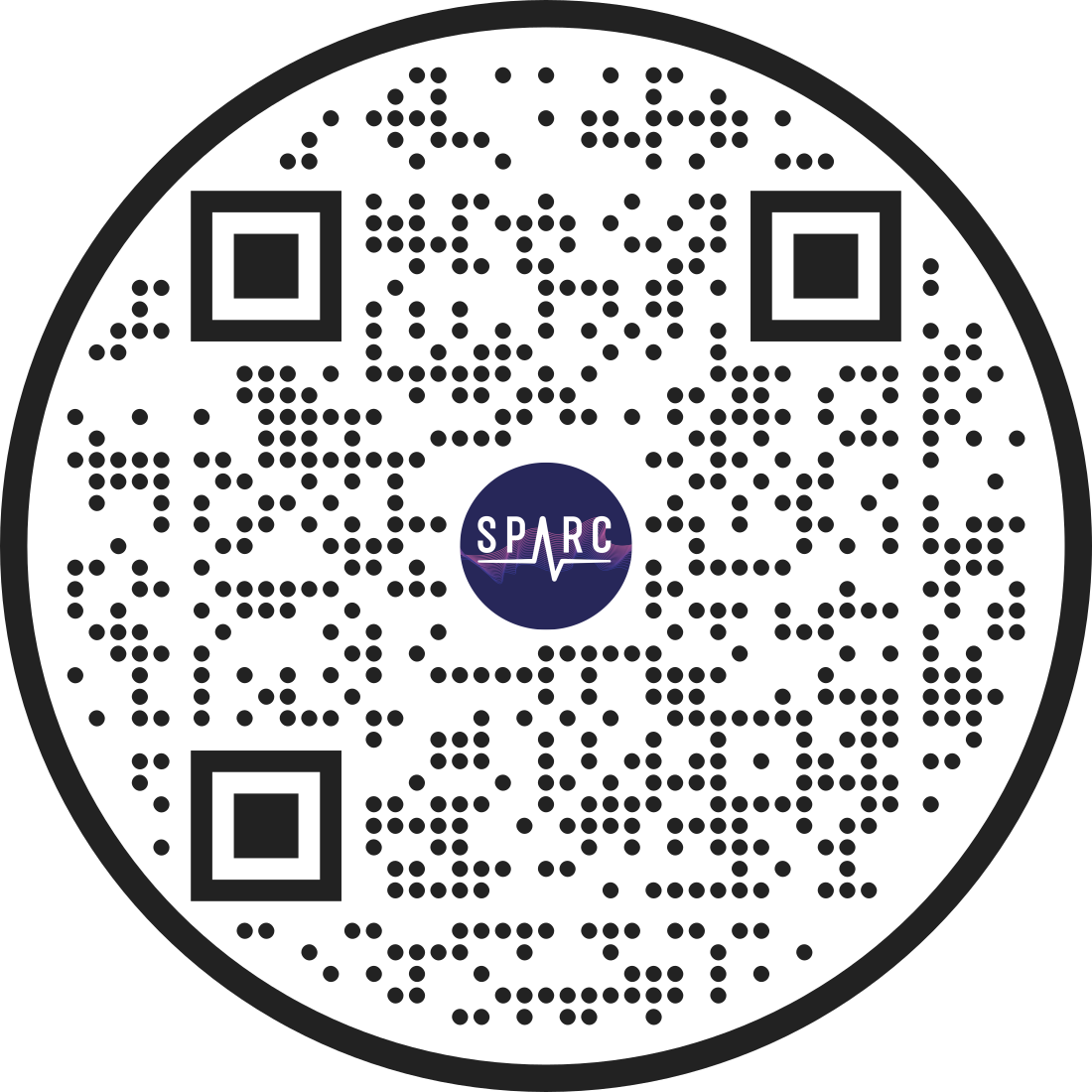Promotional Resources
SPARC-approved boilerplate language, logos, QR codes, citations, color palette
The SPARC program encourages the scientific community to use the materials below to promote the SPARC ecosystem of information and data resources being developed within the NIH Common Fund program. Find sections below on the usage of the logo, citations, colors, and QR codes. Please refer to the terms of service.
About SPARC
The NIH Common Fund’s Stimulating Peripheral Activity to Relieve Conditions (SPARC) program supports a consortium of international researchers working to accelerate development of therapeutic devices and identification of neural targets for bioelectronic medicine -- modulating electrical activity in nerves to help treat diseases and conditions by precisely adjusting organ function. By visiting the SPARC Portal, the research community can access freely available high value datasets, maps, and computational studies with the potential to help transform our understanding of nerve-organ interactions and advance bioelectronic medicine towards treatments that change lives.
SPARC Logo
This vector graphics file (.svg) has a transparent background, and can be resized to the dimensions that best serve your needs. Because of size, we have placed it at the bottom of this page SVG logo.
Credit SPARC Resources
Citations
As with any research product, all SPARC publications, datasets and resources should be appropriately cited.
SPARC Grant Support:
If you were funded by SPARC, SPARC publications and presentations should acknowledge funding through the NIH Common Fund and cite all appropriate grant numbers, for example: “This research is supported by the NIH Common Fund’s SPARC program under awards X, Y, Z” For more information you can review the NIH Policy here .
HEAL Grant Support
If you were funded by HEAL, publications and presentations should acknowledge funding through the NIH Common Fund and cite all appropriate grant numbers, for example: “This research is supported by the NIH Common Fund’s Helping to End Addiction Long-Term (HEAL) program under awards X, Y, Z” For more information you can review the NIH Policy here .
SPARC Datasets and models:
entire datasets & models or specific components of datasets & models. To promote reproducibility and give credit to SPARC investigators who publish their data, we recommend these practices for citing SPARC datasets and models. To make it easy, the SPARC Portal provides the full data citation, including the option of different formats, under the Cite tab of each dataset landing page.
Please reference: SPARC Portal (RRID:SCR_017041) [date permalink was generated]. (permalink)
Supporting publication:
- Osanlouy, M., Bandrowski, A., Bono, B. de, Brooks, D., Cassarà, A.M., Christie, R., Ebrahimi, N., Gillespie, T., Grethe, J.S., Guercio, L.A., et al. (2021). The SPARC DRC: Building a resource for the autonomic nervous system community. Frontiers in Physiology 0, 929. https://doi.org/10.3389/fphys.2021.693735
o²S²PARC:
Please reference: “o²S²PARC platform [1], https://osparc.io/”
In the reference list, include:
[1] E. Neufeld et al. SPARC’s Open Online Simulation Platform for Computational Modeling of the ANS’s Physiological Role and its Modulation by Electroceutical Devices: o2S2PARC. The FASEB Journal. 2020,34(S1):1ff, https://doi.org/10.1096/fasebj.2020.34.s1.07491.
MAPS:
Please reference: From Anatomical Connectivity flatmap, by SPARC, [date permalink was generated]. (permalink). CC-BY 4.0.
In the reference list, include: SPARC Portal (RRID:SCR_017041) Anatomical Connectivity flatmap. (permalink).
InterLex:
Please reference: InterLex (RRID:SCR_016178), [date permalink was generated]. (permalink)
SODA:
Please reference:
- Marroquin, C., Clark, J., Portillo, D., Soundarajan, S., Ngo, T., & Patel, B., (2024). SODA: Software to Support the Curation and Sharing of FAIR Autonomic Nervous System Data. Journal of Open Source Software, 9(100), 6140, https://doi.org/10.21105/joss.06140
- Marroquin, C., Clark, J., Portillo, D., Soundarajan, S., Ngo, T., & Patel, B., (2024). SODA (Software to Organize Data Automatically) for SPARC. Zenodo. 10.5281/zenodo.5565455
Colors
If you would like to reflect the SPARC Portal colors, use the following values:
Purple HEX: #8300BF RBG: 131-0-191 CMYK:
Light Purple HEX: #BC00FC RBG:188-0-252
Dark Blue HEX: #24245B RGB: 36-36-91
Blue HEX: #0026FF RBG: 0-38-255
QR Codes
QR codes are especially useful for any print material (like posters and flyers) because these codes can be easily scanned by smartphones. Select the quick code below that best serves your purpose.
This QR code will resolve to the SPARC Portal website, https://sparc.science:

This QR Code will resolve to the NIH Common Fund SPARC program website:

SVG logo
Updated 4 months ago
